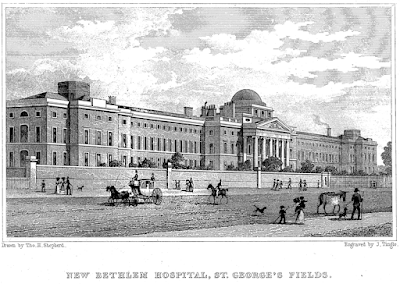In 1597 King James VI of Scotland released his successful book, Daemonologie, which explored the areas of witchcraft and demonic magic. The kingdoms of Scotland & England were united in 1603 when King James moved south and became King James I of England. He had Parliament pass the Witchcraft Statute of 1604, making witchcraft a crime punishable by death. This led to a heightened public anxiety about witches that quietly grew in the decades that followed, worsened by similar fears in Europe.
King Charles I (1600-49) first created the Long Parliament in Nov 1640, not long after the dissolution of the Short Parliament. It was Charles' practice to have women accused of witchcraft brought before him, and in most cases, he concluded that they were old or mentally unbalanced. Eventually he gave them money and sent them home.
At first John Stearne made the principal accusations, and Hopkins, who he met in Manningtree Essex in 1644, was appointed as the assistant. Hopkins had overheard 6 women inside his own property, Thorn Inn in Mistley, women who were discussing their meetings with the Devil. Hopkins got villagers to hire him and his two paid assistants to search out witches, get their confessions and have the authorities hang them. In Mar 1645, the arrests and trials of Rebecca West and Anne West her mother, Elizabeth Clarke, Elizabeth Gooding, Anne Leach and Hellen Clarke followed.
Records show that Hopkins was also given an official commission by the Long Parliament and received payment from the government to prosecute witches. Hopkins and Stearne became known as "professional" witch-finders. Of the next 23 women they tried as witches, four died in prison and 19 were later convicted and hanged.
Before long, Hopkins’ zeal had surpassed Stearne’s, and he became the leader, assuming the title of Witch-finder General in 1645. In the chaos of the Civil War and with the lack of appointed court judges, torture was accepted. Hopkins, Stearne and their associates travelled the villages and towns of Essex, Suffolk, Norfolk & Huntingdon where, within a year or more, there were c250 people accused of witchcraft. c100 of those were hanged. These cases, including a few Anglican clergymen, were called The Hopkins' Trials.
Witch-hunting was meant to be a judicial process, so torture was illegal. Yet many of his methods of inquisition used by Hopkins were very close to torture and were taken directly from King James’ best seller Daemonologie.
Hopkins used many methods to examine and torture:
A] He prevented women from sleeping, walking them around endlessly without shoes on. Once their feet blistered, it led to a quicker confession.
B] Witches fed their accompanying familiars/animals with their own blood. So by keeping the witch under guard, this ensured that their familiars would not be able to feed. He concentrated on the familiars at night because it was at night that witches frightened the townsfolk.
C] Hopkins pricked any skin deformity on the accused that was thought to be an extra mole for suckling imps, determining if the woman possessed the Devil’s mark. Lady Pickers cut the woman’s arms with a needle or pin, and if she did not bleed, she was said to be a witch.
D] The Water Test involved dropping the accused into water, because a witch, having denied baptism, would be repelled by the water. Hopkins’ infamous Swimming Test involved binding the arms and legs of the accused to a chair before throwing her into the village pond. If she sank and drowned, she would be innocent and received into heaven; if she floated and survived, she would then be tried as a witch.
Hopkins’ favourite method of interrogation once torture was by illegal in England was swimming where the woman was bound and thrown into a pond. If she floated she was deemed a witch who rejected the waters of baptism; if she sank and drowned, then she was innocent. Yet Hopkins’ ongoing motivation for hunting witches was unclear.
Hopkins profited financially from the trials, but was this his primary motivation? Hopkins had not possessed property, was not well educated, lacked good ancestry and had no military experience or community power. Perhaps he was just relishing in his newly found power. Perhaps he hated women.
Some accounts say Hopkins drowned undergoing his own Water Trial, after being accused of witchcraft himself. Hopkins actually died after an illness in 1647. Just a few decades later (1684), the very last execution for witchcraft in England took place in Exeter.













































.png)





























.jpg)


















